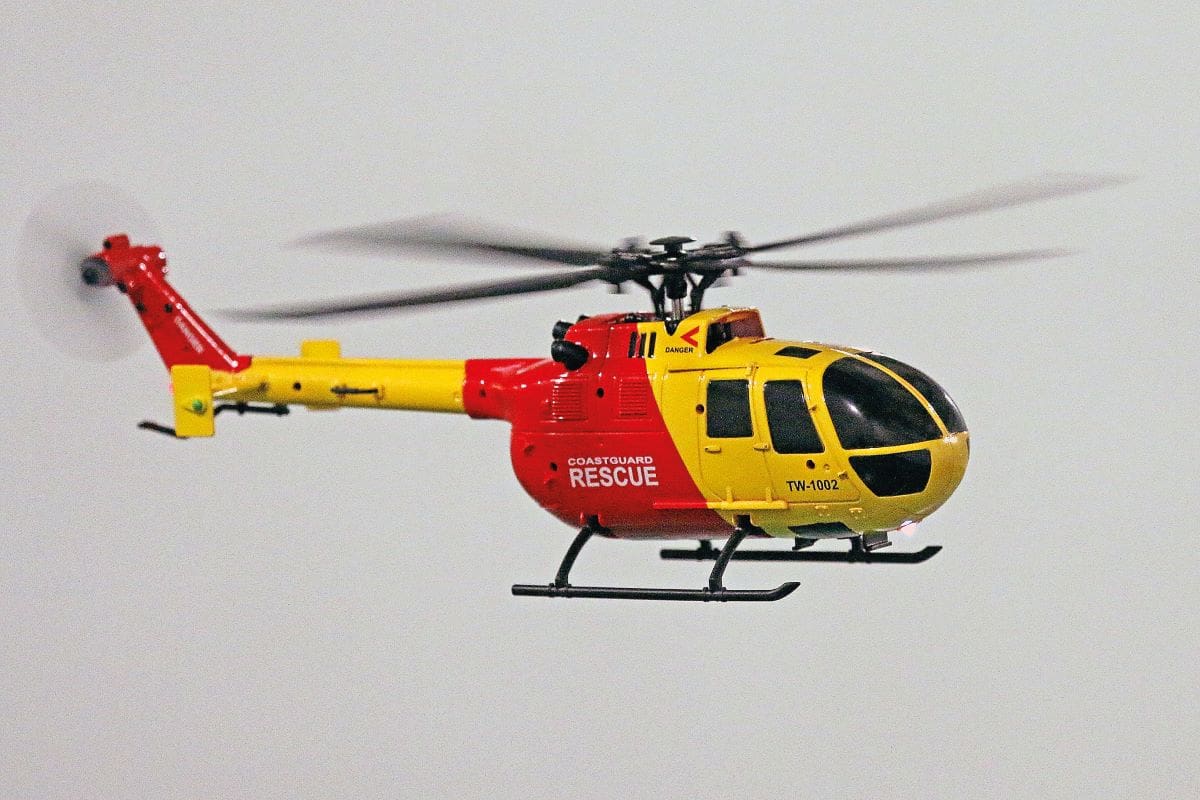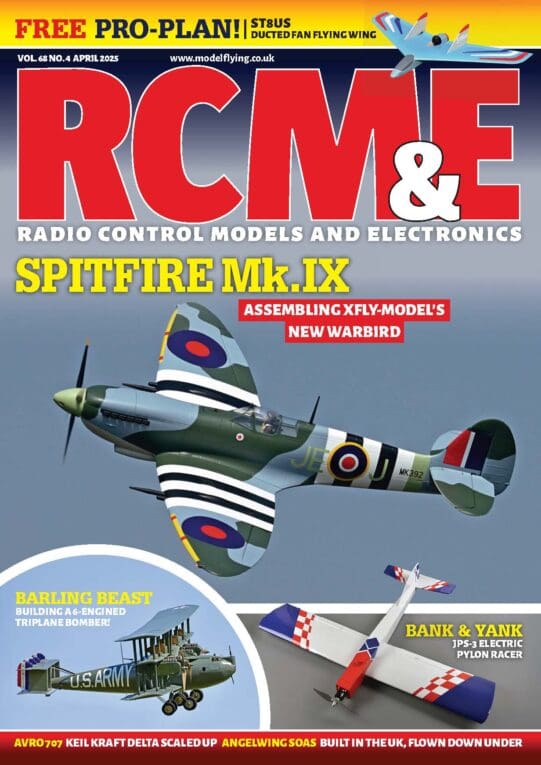Starved of his usual flying fix due to windy weather the Editor enjoys taking the latest Twister micro helicopter for a spin.
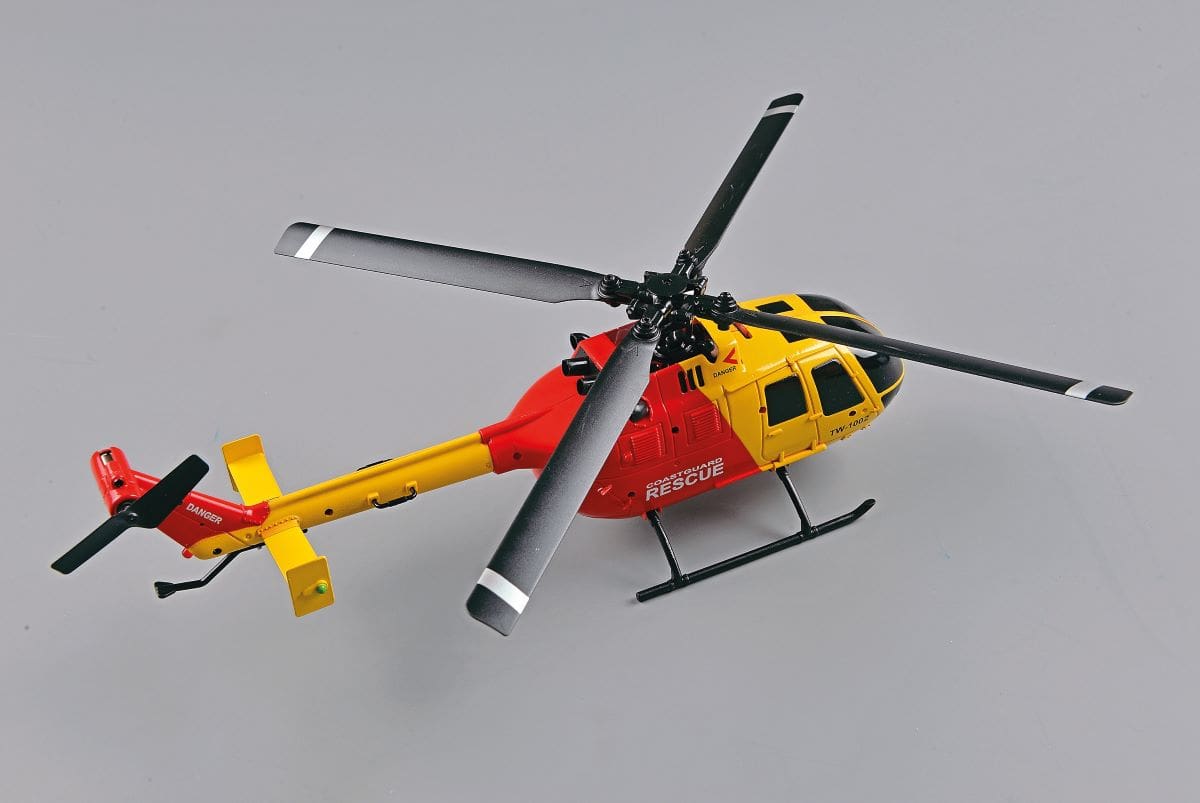
Words: Kevin Crozier Photos: Kevin Crozier, Andy Harrold
In the April 2021 issue I reviewed the Twister Ninja 250. This small pod and boom, fixed pitch helicopter, with its 250mm diameter main rotor, has become one of the mainstays of my indoor flying fleet. It is guaranteed to raise positive comments every time it is flown and tends to disguise my somewhat rusty helicopter flying skills. Circuits in my club’s basketball size hall, plus figure of eights and nose in hovering can all be flown with ease. So when I saw that J.Perkins were set to introduce a new four-blade, flybarless scale model to the Twister range, a neat rendition of the chunky but attractive Messerschmitt-Bölkow-Blohm BO-105, I quickly put it on the RCM&E review list.
Enjoy more RCM&E Magazine reading every month.
Click here to subscribe & save.
BOX SET
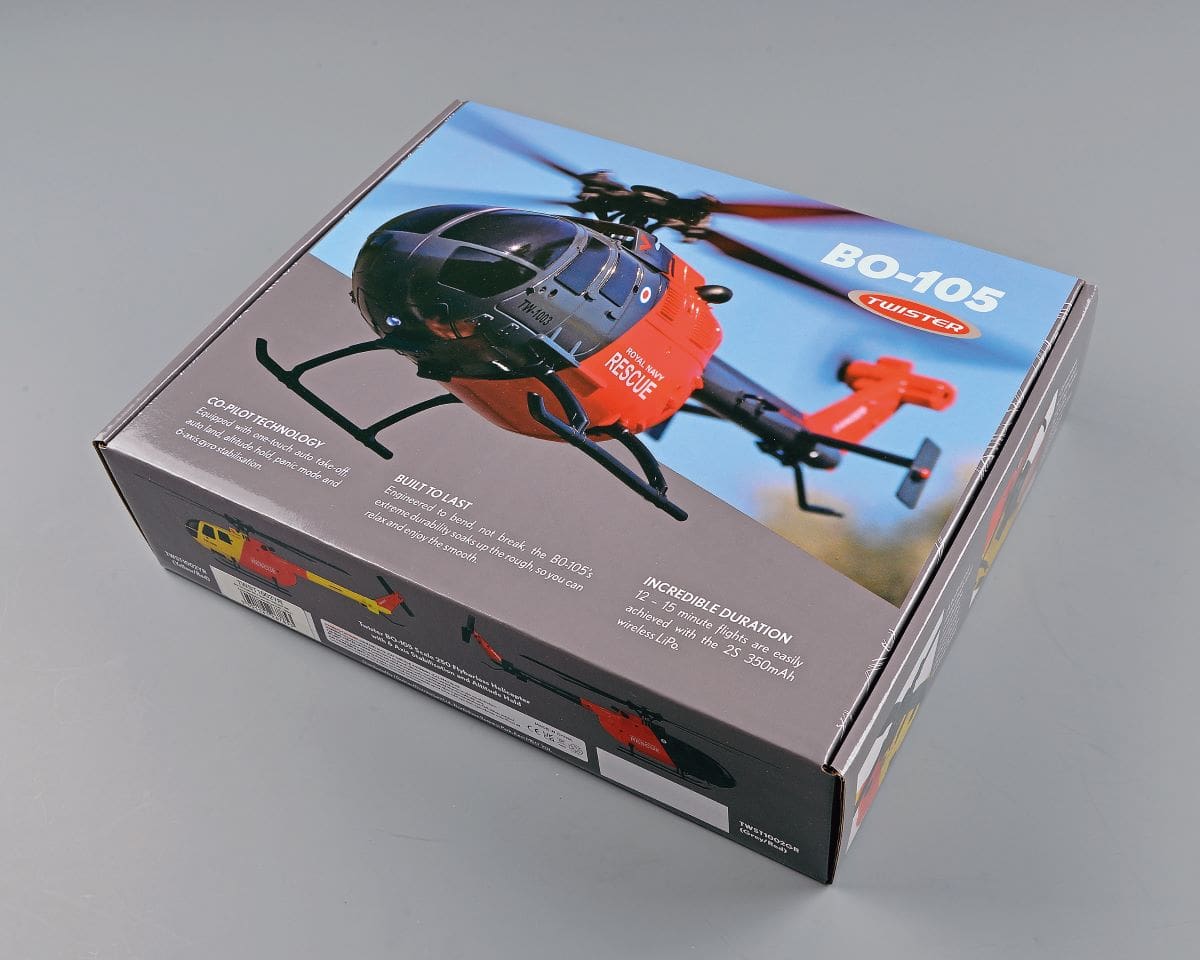
Supplied in a flip top box the BO-105 comes with a pre-bound four channel 2.4GHz Tx, a 2S 350mAh Li-Ion battery with integral charger, USB charge lead, toolkit and two spare blades.
Snugly nestled in upper and lower vac-formed trays, the contents are well protected. The model is supplied with a 2S lithium-ion pack to get you started but my experience with the Ninja suggests that I will probably want to invest in an extra pack or two as both models are likely to get flown a lot during an indoor flying session. To this end the lower tray has four battery slots in total which, if fully populated, will keep your BO-105 flying for several flights. Spare packs are available from J Perkins stockists for £13.99 RRP each.
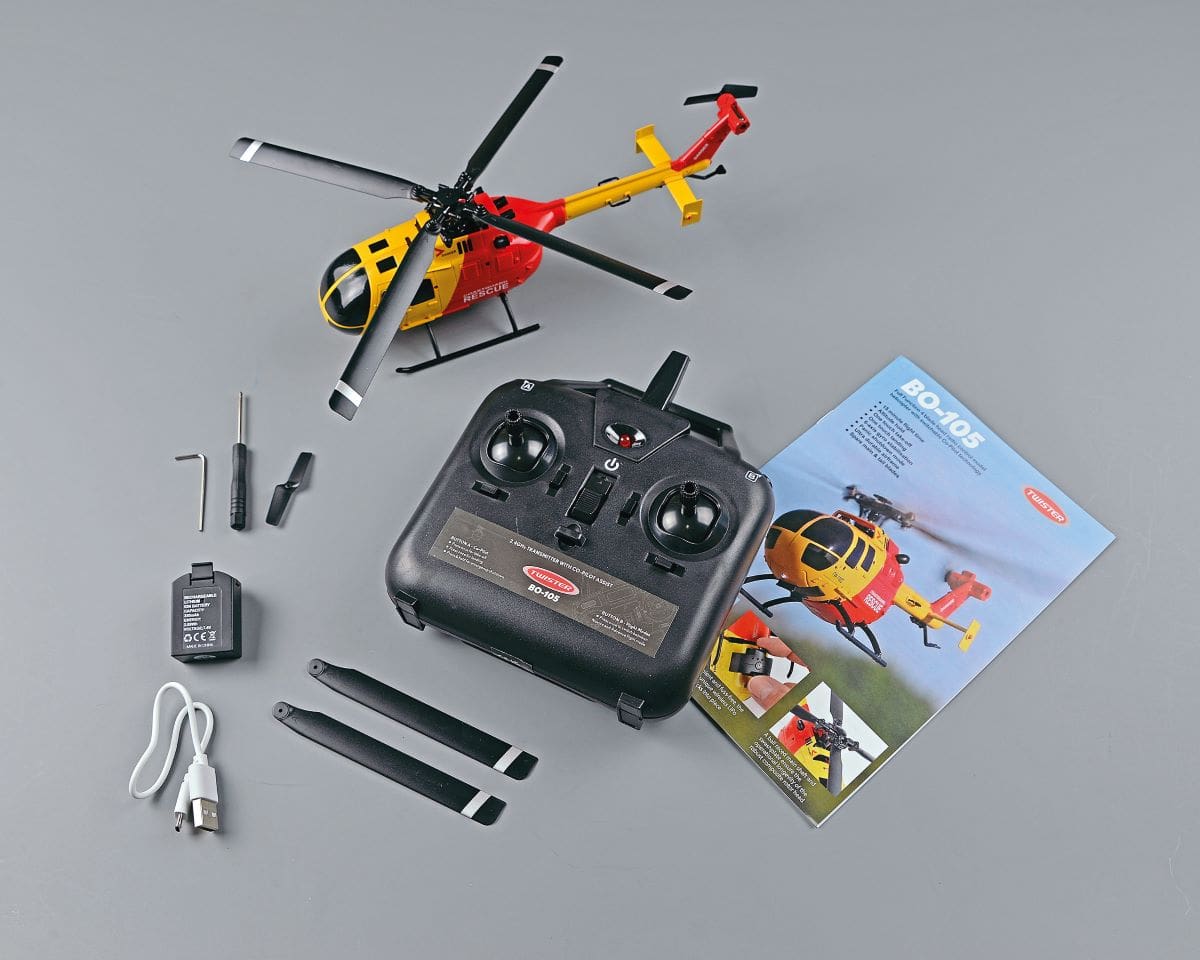
UP CLOSE
Available with a grey/red (Royal Navy Rescue) or yellow/red (Coastguard Rescue) bodyshell, the Twister BO-105 is quite a faithful representation of the full-size machine, complete with a four-blade main rotor and a fin mounted tail rotor. I chose the Coastguard scheme simply because I reasoned that the bright yellow body would show up better when flying down at the far end of my local sports hall. The overall appearance is very realistic and I would think that this good looking aircraft would compare very favourably to a static plastic kit of similar 1:48 scale. It is well painted, with neatly moulded panel lines and sports several scale features such as dummy turbine exhausts and the distinctive rear stabiliser with twin fins.
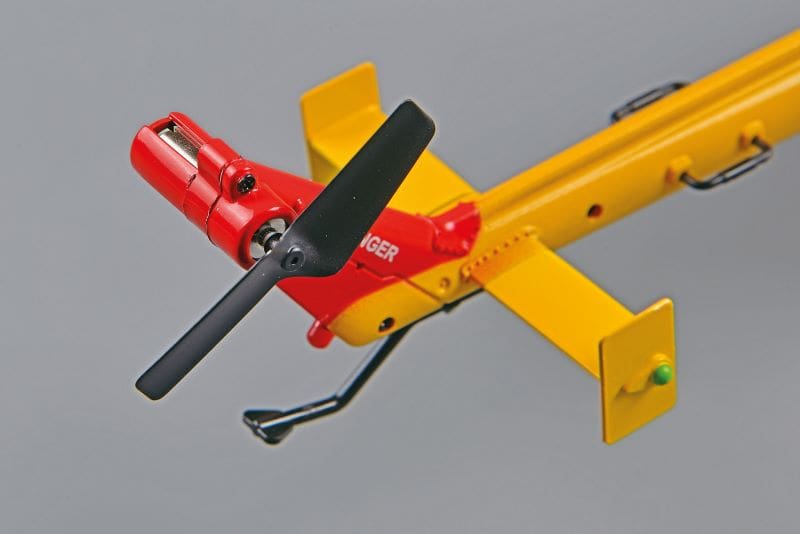
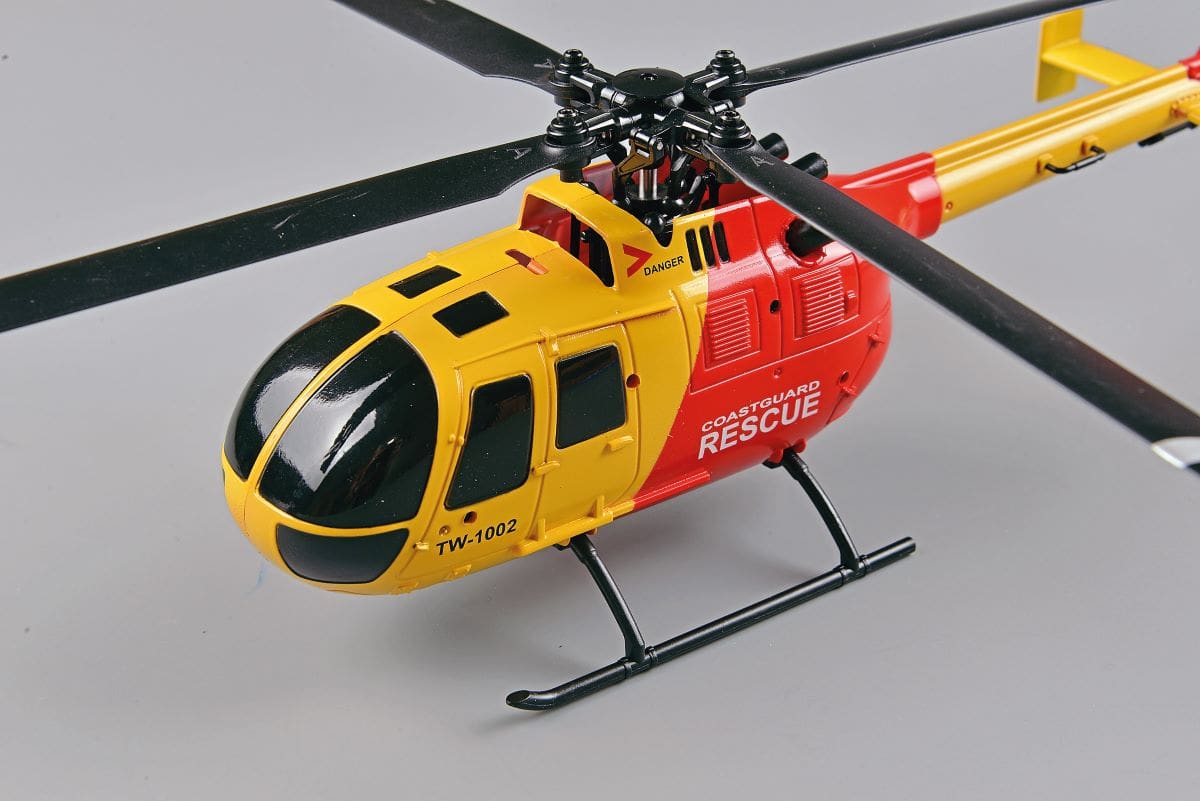
Under the canopy the BO-105 shares the same state-of-the-art electronics as the Ninja 250. It offers six axis gyro stabilisation, with novice and advanced flight modes. There’s also auto take off and land modes, coupled to a well-behaved attitude hold system. The 2S battery provides flight durations of up to fifteen minutes, but if you push that to the limit then you’ll be pleased to know that the BO-105 also incorporates auto shutdown programming which will land this small scale helicopter safely on its skids.
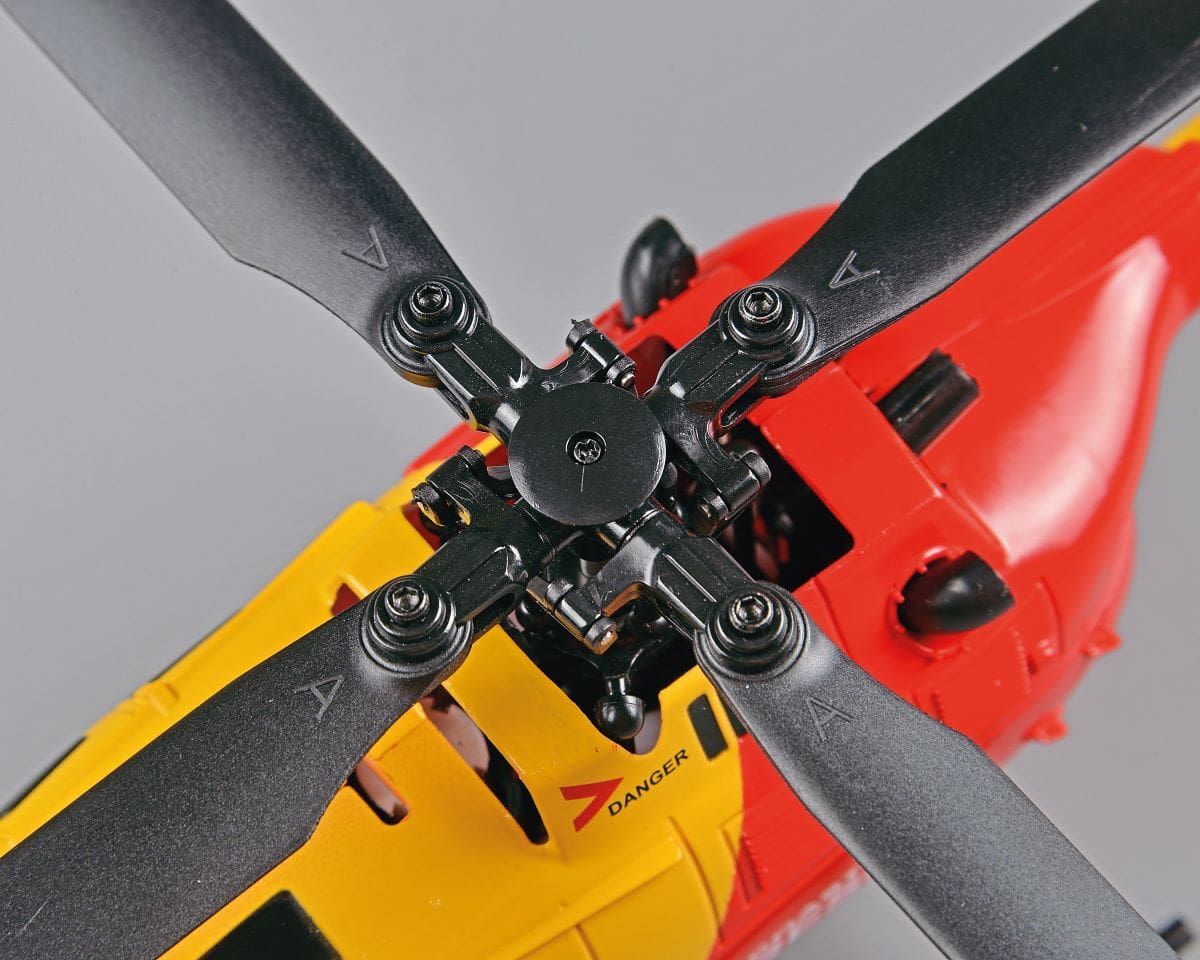
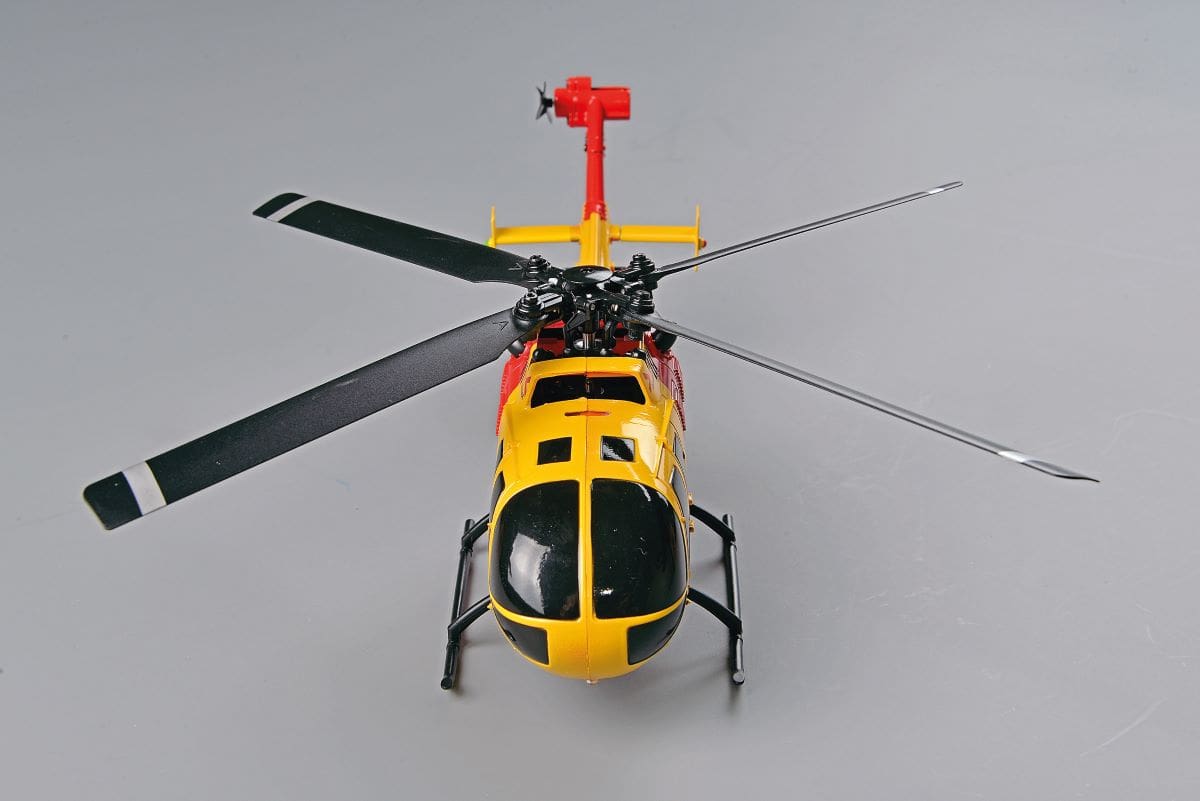
CHARGED UP
Charging the two-cell lithium-ion pack is performed using the supplied USB lead. The instructions call it a USB charger, but it looks like a conventional USB lead to me, so I think the battery pack must include the actual charging circuit. But don’t quote me on that! When plugged in up to four bright blue LEDs will flash and the pack is fully charged when all four are lit and remain steady.
The transmitter is powered by four AA batteries (not supplied). Unlike some small Ready to Fly packages this one doesn’t mandate the use of alkaline cells, so I happily loaded up some NiMH rechargeables which work fine.
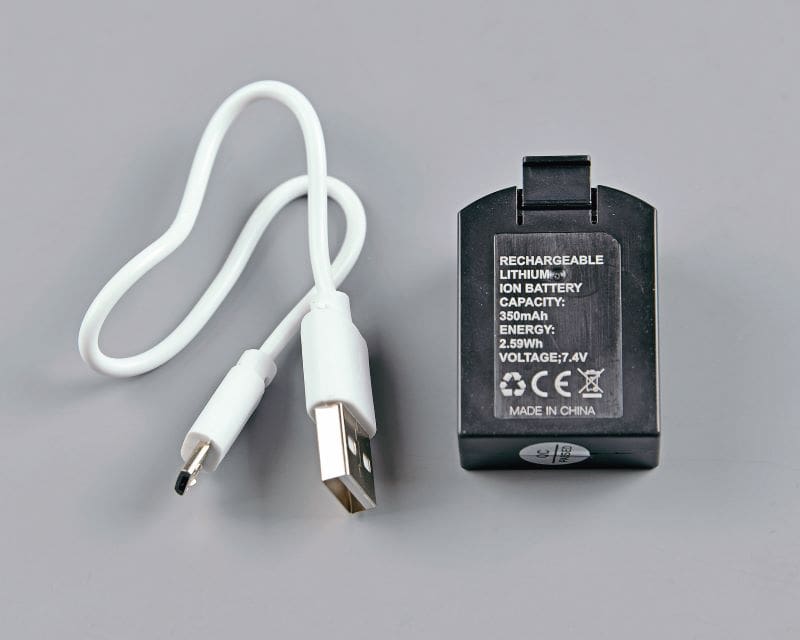
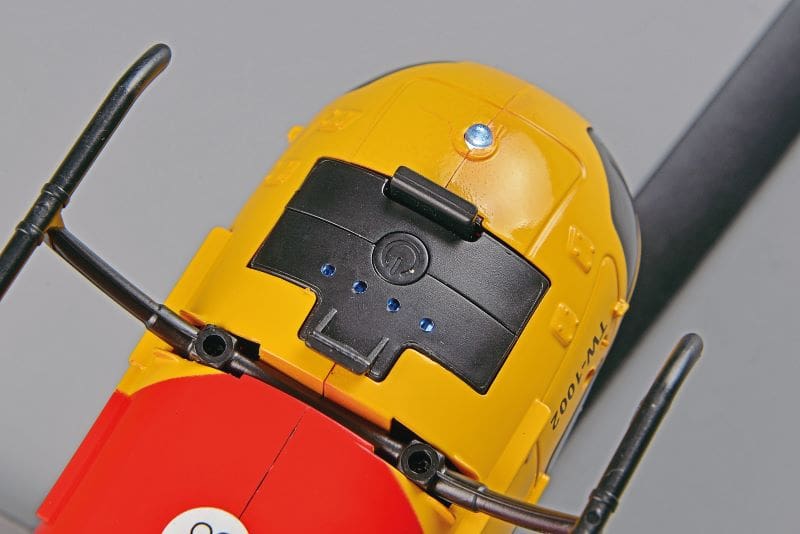
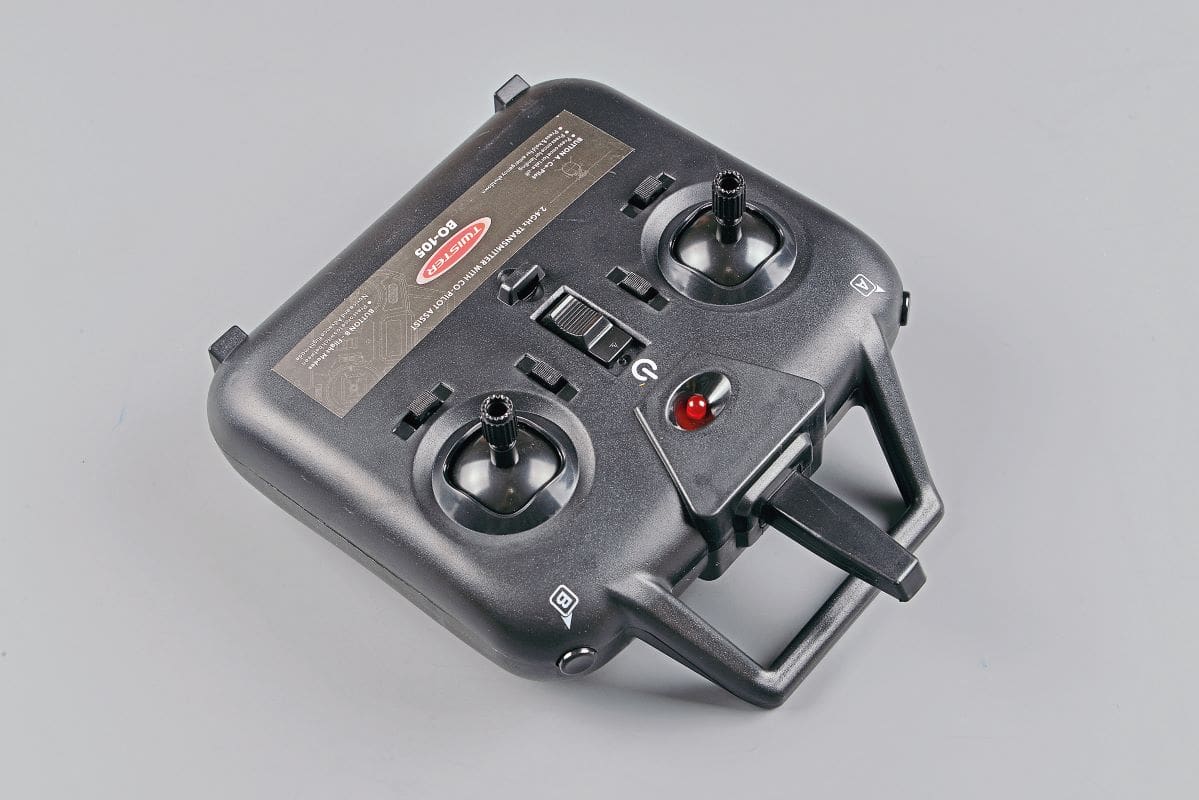
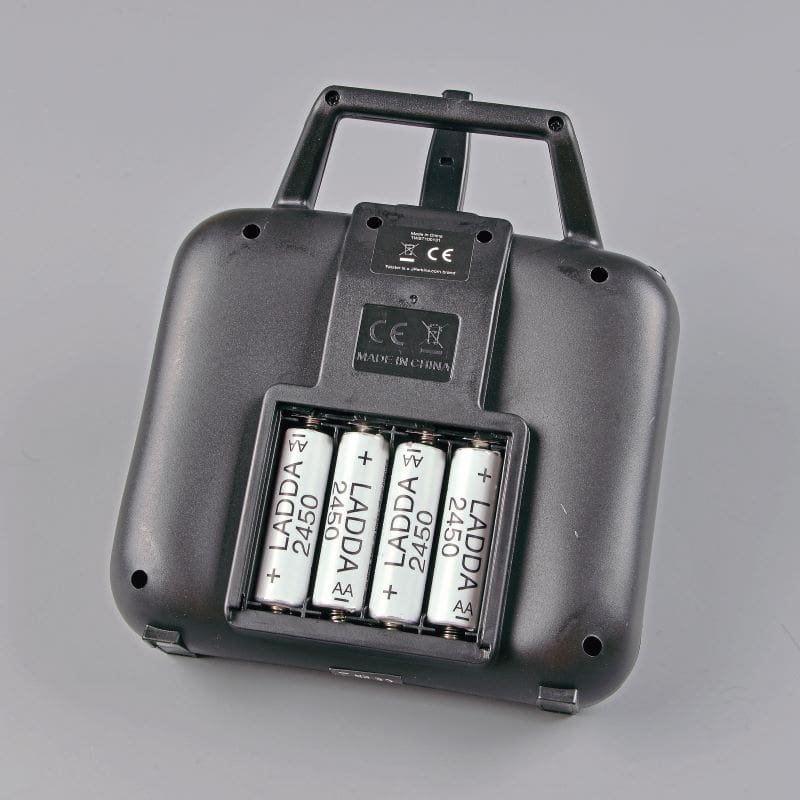
The model’s battery pack can then be pushed into place in its slot under the helicopter’s nose. The Ninja doesn’t have a power switch, but the BO-105 battery pack does and it needs pressing to power up the model, after which the white LED in the nose will illuminate, showing that the model is ready to go. Time now to switch on the Tx and follow the arming sequence in the well written instruction booklet.
It is worth noting that the Tx is supplied as Mode 2, but it can be easily reconfigured to Mode 1 if required.
TAKE OFF
There are two ways to take off.
The easiest is to press the ‘Co-Pilot Assist’ button (marked A) on the left shoulder of the Tx. The blades will then spin up and the model will climb to around 1.5 metres, although you still need to be ready to control the heli to counteract any drift. At this point the model settles into a high hover, waiting for you to take full command. Be aware that if you touch the throttle during take-off then that control instantly reverts to the pilot.
The second way is a normal rise off ground. The sticks are both pulled into their opposing lower corners, which starts the rotor at low speed. When you are ready you can increase power and control the take-off from the ground up.
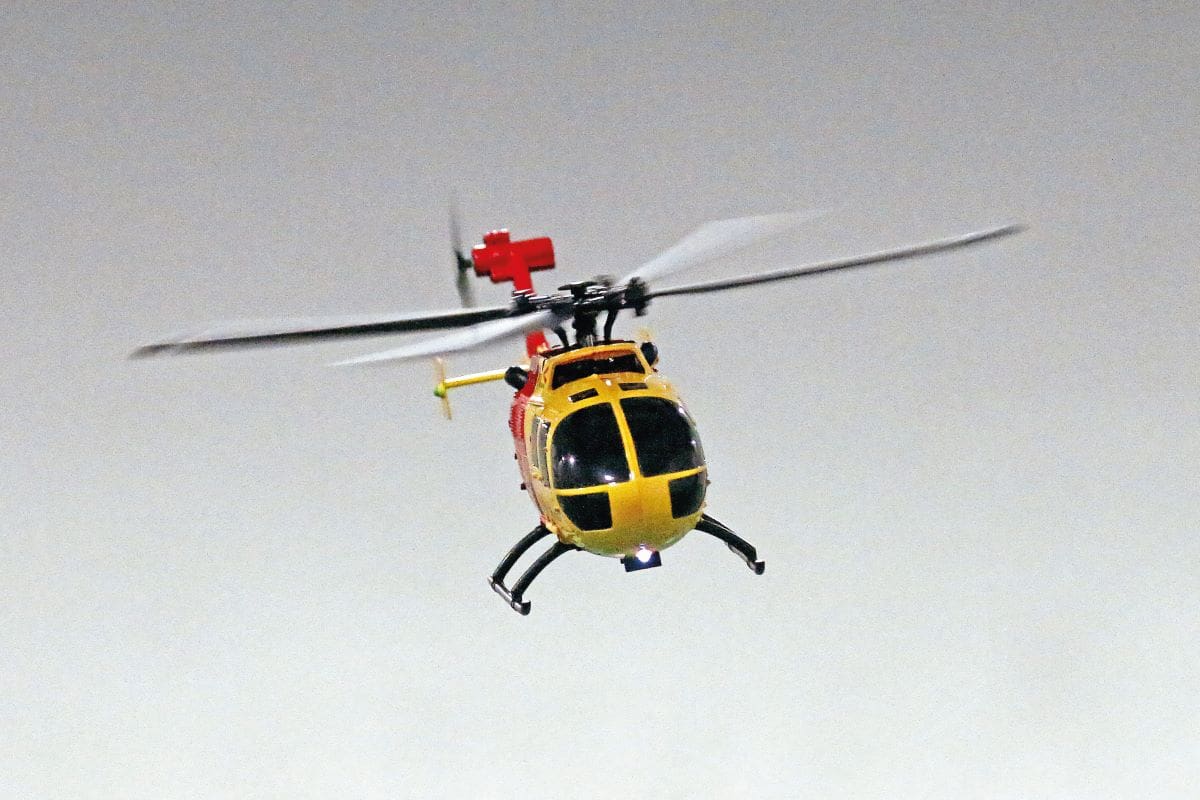
IN FLIGHT
When switched on the BO-105 defaults to Novice Flight Mode. In flight this offers full control of the model but with reduced movements to soften the model’s response. In this default mode the model is easy to fly, and I was soon flying circuits and figures of eights with ease. Nose in hovering was a delight too, savouring the effect of that bulbous scale nose pointing at me.
Alternatively, you can press the B button on the right shoulder of the Tx. This engages Advanced Flight Mode which gives you full control. In calm conditions I couldn’t say that I noticed much difference but when the air started to move around bit due to turbulence created by some fixed wing models then the BO-105 definitely became a bit more demanding on the sticks and I soon switched back into Novice mode. She remained perfectly controllable, but the scale effect was spoilt so I landed her to wait for the gaggle of Sopwith biplanes to finish their straffing runs up and down the hall. The original Twister usually takes this sort of turbulent air in her stride but the BO-105 was clearly a little shaken and stirred and, whilst still easy to control, it was getting bounced around more than her sibling.
I also have to admit that, until now, when flying the Ninja at our club indoor sessions, I had completely forgotten about Advanced Mode. I just switch her on and fly. Maybe that’s why my Ninja flights, smoothed out by Novice Mode, always seem to get quite a few admiring comments! So, no doubt I’ll end up doing most of my flying with the BO-105 in its default Novice flight mode too!
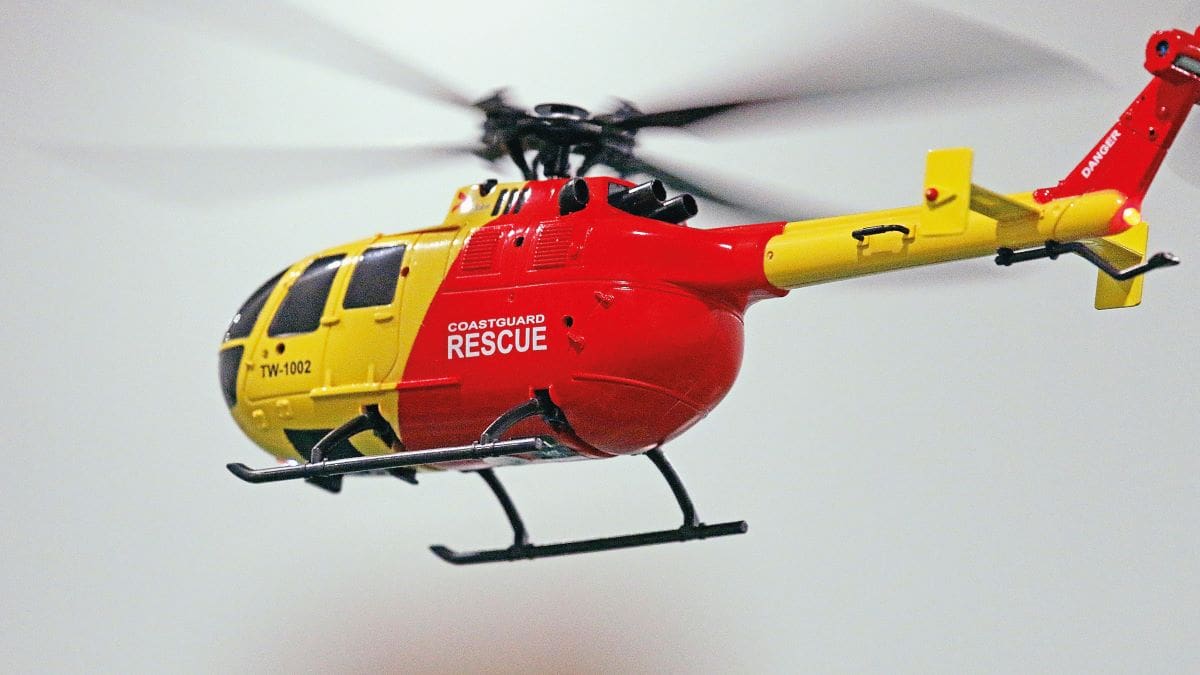
LANDING
As with take-off there are two ways to get the little BO-105 back on the ground. The easiest way is by pressing the Co-Pilot button (A) on the left of the Tx. Provided that the heli is within ten feet of the ground it will reduce power and lower itself gently to the ground.
Or you can just land her yourself. When the model has touched down and you reduce the power to zero the blades will wind down rather than just cutting abruptly. This stops the model from toppling over due to any remaining torque from the rotor.
IN SUMMARY
The Twister BO-105 is a great little model that flies really well. As with its sibling, the Ninja 250, it’s not festooned with unnecessary features, but those that it does have, like the Co-Pilot and Flight Modes, work extremely well. Top marks again to Twister and J Perkins for another well sorted small helicopter, especially one that looks so good thanks to the well detailed scale body and four-blade rotor head.
